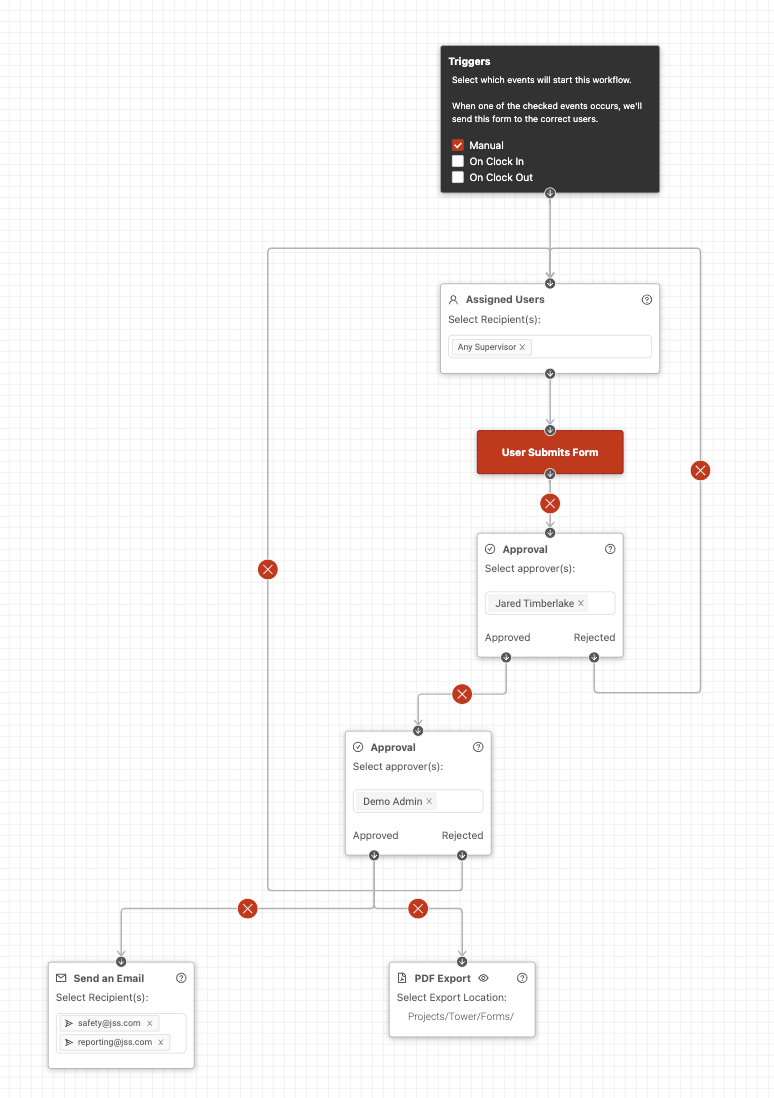Large Contractors Vs. Small Contractors
Simple. It’s because larger contractors typically tend to place even more emphasis on delivering a project on time and within budget, ultimately asking their PM’s to report and track project costs and labour in much greater detail. Now this of course costs quite a bit more in terms of overhead to facilitate, so then they typically hire Project Coordinators and delegate a lot of the tedious tracking and manual entry work to them. Once the machine gets rolling, PM’s are typically phased from one project to the next, and even might find they have the time to take on more projects as long as they are supported by more PC’s.
Smaller contractors typically don’t have this luxury. They often don’t have the budget and staff needed to accommodate the overhead requirements of a detailed project cost and budget tracking system, so they typically sacrifice that aspect entirely. Those of you who have only been on the larger contractor side of things might think this is crazy. Certainly in today’s day and age of technology it definitely is (I’ll get to why later on), but some still argue that it makes sense, and I can definitely relate based off of my first-hand experience working as a PM.

By shifting to a basic budget and cost tracking system, smaller contractors typically free up more time for their PM’s to take on and manage more projects at once. This typically increases the overall revenue of the company, which is only a good thing if all the projects are managed effectively and turn a profit. In some cases this can be very effective and profitable, especially if the work that they tend to complete is repeatable, allowing their workers to become more efficient. So why then do most large contractors try to avoid having their PM’s manage multiple projects?

Risk and Reputation Matter
Simply put, it is far too risky for large contractors to go into a project without the proper tools and reporting required to give them the insights and ability to track and monitor progress. In an effort to be more proactive and less reactive, larger contractors typically have weighed out the risks of decreasing overhead and going into a project essentially blind, versus deploying a structured and organized tracking system that allows them to know exactly what is happening now and likely going to occur soon.

This may have started as a project-specific system at first, which then evolved into every aspect of their business due to the measured success it provided. As a result, they now realize having a greater organizational emphasis on reporting and analytics allows them to take on more complex projects with higher margins, ultimately offsetting the increased overhead required to manage them. Not only that, the risk of the project falling out of budget is greatly reduced due to the forecasting and intelligent decision-making that can be made as a result. After all, there is nothing worse than using up valuable resources for 2-3 years, only to find that the project is unprofitable.
The Difference
In summary, larger contractors tend to take on more complex and less cookie cutter work, which is typically higher margin but requires much more overhead to manage. Their clients tend to look to them for more than just a cheap price, and evaluate other things such as quality of work, innovativeness, and other value added services as they understand that there is much more than just pricing that can affect project timelines and budget.

On the other hand, smaller contractors stick to what they know and tend to put more emphasis on winning projects that are similar to past ones, particularly in an effort to increase profitability from repeatability. Their clients tend to focus more on the lowest price, and often fail to understand that other factors should be considered when evaluating a quote. As a result, the smaller contractors tend to not care too much about detailed cost tracking, and tend to ask PM’s to manage multiple projects in order to increase revenue. Although some do get away with this method, it may lead to a disaster eventually, especially if unprofitable projects start occurring more frequently.
Are you a smaller contractor and are unsure how job costing can help your organization? If so, check out our article explaining why you must get started today!
So you might wonder: is there a way to bring the detailed cost and labour tracking that larger contractors deploy onto the smaller projects? If so, will this disrupt or change the way small contractors do business?
The Change the Industry Needed
Construction Workflow Automation (CWA) is the answer. It is a tool that bridges the gap between the detailed cost tracking and project management that larger contractors can deploy, with that of the less detailed high volume approach of the smaller contractors. With CWA, smaller contractors can now automate a lot of the tedious manual entry that is required to deploy a detailed job costing system, ultimately giving them the ability to squeeze even more profitability out of their projects with no additional overhead.

Ontraccr is the industry's first CWA-based software that allows contractors of all shapes and sizes to fully digitize their organizations without having to change the way they do things! That is huge because we all know that no two contractors do things the exact same way, which is why Ontraccr was built to mold to you, and not the other way around. By utilizing a CWA software like Ontraccr, small contractors can continue doing business the way they are used to, but do so much more efficiently. They not only gain deeper insights into their projects and costs, but also are able to further reduce overhead costs associated with manual entry.
Larger contractors can benefit from CWA too! Gone are the days of having to spend major bucks on a custom on-premise solution, which may even require a whole host of hardware to deploy. With the introduction of the cloud, larger contractors need to shift away from these clunky software packages as they severely limit how their business can operate. By combining their knowledge of job costing and tracking, large contractors have the ability to quickly design custom company-specific CWA workflows such as document management, time tracking, billing, communications, and much more. CWA allows for PM’s to directly control and set their workflows and eliminate the need for a PC to keep up with the manual entry and tracking.
Final Thoughts
In the construction industry, shifting organizational focus towards technology has been a constant struggle. With the tight margins and lack of understanding from their clients, it’s easy to see why small contractors are reluctant to make any change to their “If it ain’t broke, don’t fix it” mentality. They simply can’t afford to test out new methods, or are just far too busy with the high volume of work on their plate. On top of it all, all of the existing solutions out there involve them having to use MORE overhead to manage the system due to the increased levels of manual entry required to feed their systems.
As for the large contractors, they also have lots of room for improvement. They may be on the right track with the importance they place on budget and cost tracking, as well as analytics, but their current methods are grossly outdated. Manual entry and tedious work isn’t eliminated and instead is delegated, making it only possible to have this detailed level of tracking on projects with healthier margins and budgets in place for such management.
This is why CWA is so important. It not only solves this problem directly by automating wherever possible and eliminating manual entry, but also decreases the overhead required to maintain your existing business workflows! This is exactly what the industry needs to bridge the gap between not only construction and technology, but also between large and small contractors and their operational differences.
In the next article I will go over in detail the difficulties faced as a result of handling multiple projects, and some tips on how to do so effectively.
If you enjoyed this article, join our mailing list now to receive all the latest articles and stay up-to-date on what Ontraccr is developing to bring automation to the construction industry.






